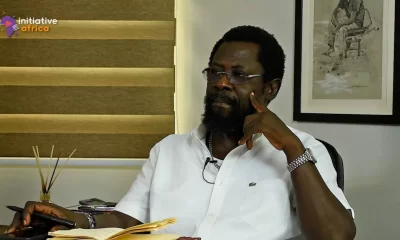Top Stories
Recession: What US Federal Reserve Said About New Rate Hike
Recession: What US Federal Reserve Said About New Rate Hike
After intensifying interest rate hikes, Federal Reserve Chairman, Jerome Powell indicated on Wednesday that the central bank hopes to prevent a recession.
The Fed’s interest rate hike on Wednesday was the most in a single meeting since 1994. The target range for short-term borrowing costs is currently 1.50% to 1.75%.
Powell said the Fed’s goal is to depress the rapid pace of inflation closer to its 2% target, all while preserving a “strong” labour market.
“We’re not trying to induce a recession now, let’s be clear about that,” Powell told reporters after the policy-setting Federal Open Market Committee raised short-term rates by 0.75%.
What you should know
- The Fed’s unusual move on Wednesday sparked concerns that the central bank is now more likely to hike rates at a pace that would push the economy into recession. And this action has sparked speculation about whether a 0.75% rate hike paves the way for much bigger movements in the months ahead.
- However, Powell stated that the Fed has no plans to accelerate the pace of rate hikes in the near future, at least not at its next policy-setting meeting on July 26-27.
- “The next meeting could well be about a decision between 50 and 75 [basis points],” Powell said Wednesday, essentially downplaying any speculation over a 100 basis point move.
- However, Powell reminded markets that the central bank retains flexibility on its rate moves — which he said justified the Fed’s sudden decision to abandon plans for a 0.50% move this week. He added, “Our policy is adaptive and it will continue to do so,”
- Projections from the Fed published Wednesday showed the median official expects interest rates will rise to 3.4% by year-end, well above the 2.5% level that many Fed officials have described as “restrictive” for economic activity.


 Top Stories18 hours ago
Top Stories18 hours agoBreaking: Ibadan Stampede: Court Orders Remand Of Ooni’s Ex-Wife, School Principal

 Top Stories23 hours ago
Top Stories23 hours agoI’m not prepared to downsize my cabinet — Tinubu

 Sports19 hours ago
Sports19 hours agoGOAT: Who said Messi is better than me – Cristiano Ronaldo

 Entertainment20 hours ago
Entertainment20 hours agoRegina Daniels reveals the best way to predict one’s future as she shares more photos from her vacation

 Entertainment19 hours ago
Entertainment19 hours agoNkechi Blessing gets engaged to younger lover, Xxssive [VIDEO]

 Entertainment20 hours ago
Entertainment20 hours agoJay-Z has no ‘plans to show loyalty to longtime friend Diddy’ as he battles r@pe allegation

 News17 hours ago
News17 hours agoDele Farotimi released from Ekiti correctional centre

 Entertainment20 hours ago
Entertainment20 hours agoSelena Gomez flashes gorgeous $1M engagement ring






